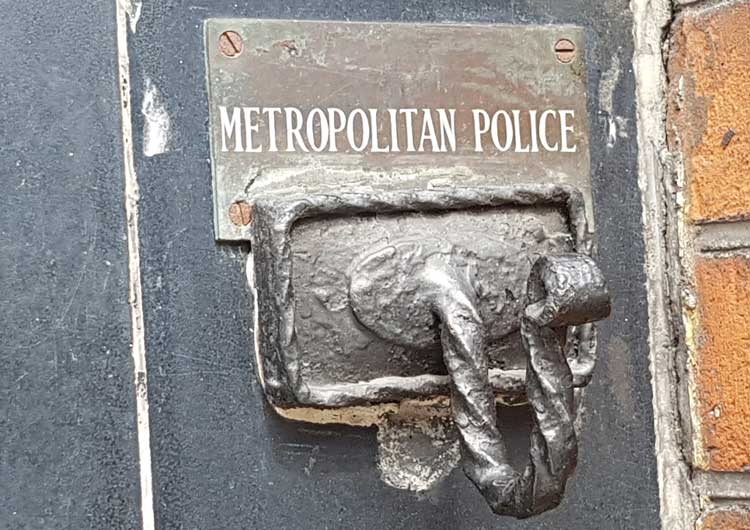
A curious policeman's coat hook can be found on the wall of number 4 Great Newport Street, and most people who pass it don't even notice that it is there, which is a great pity since it is a true relic of bygone London.
There's no doubt about it, the intersection at which St Martin's Lane, Upper St Martin's Lane, Long Acre, Garrick Street, Cranbourn Street and Great Newport Street converge is a very busy place indeed.
Even today, with traffic lights to aid your crossing and to ensure that the cars are able to get across the busy junction without colliding with each other, this little section of the West End can be a nightmare to negotiate.
But, in days gone by, well, let's just say the word "chaotic" must have sprung to the mind of many a person, as they took their lives in their hands, and hoped and prayed for the best, as they set off for the other side, and whichever street they were heading for.
In the 1930's, traffic lights were few and far between across London, and it was the policemen who had the unenviable task of ensuring that the capital's ever increasing traffic flow kept moving.
Traffic duty was an integral part of a policeman's lot, much to the wonder of foreign visitors, as is evidence by the following article, which appeared in The Lancashire Evening Post, on Wednesday, 28th October, 1931:-
"Dr. Karl Silex, London correspondent of the "Deutsche Allgemeine Zietung," in his new book "John Bull At Home", has the following pertinent comments on London traffic control:-
"The traveller familiar with other big cities of the world is immediately struck by the exorbitant number of police used on traffic duty in London.
Except at one or two points, the police have no mechanical signals at their disposal. Everything is done by the man's hand.
This means that at the busy cross-roads the services of four to six policemen are required."
The article also reported on a basic flaw with the traffic lights that were in use across London:-
"True, light signals controlling the traffic from the side streets have been put up in Oxford-street.
But the driver of a car cannot see these signals because they do not hang over the road, but stand on the pavement.
The consequence is that a policeman has to be stationed beside them to instruct drivers."
One busy London junction was the aforementioned junction at which Great Newport Street converged with the other five thoroughfares.
During the hot summer months, so the story goes, the police officers, who were given the task of directing the traffic at this busy intersection, used to hang their capes on a convenient nail which then protruded from one of the boards that surrounded the building works of number 4, Great Newport Street, which was then under construction.
As to how the nail was replaced by the coat hook, I received the following from a reader whose grandfather was a member of the Metropolitan Police Traffic Division, which sheds an interesting light on the subject:-
"My grandfather told me about this hook. He was in the Met Traffic division in the late 40s/early 50s and there was indeed a large nail to hang their cloaks on.
Him and his colleague one day stopped a surveyor who was eyeing up the nail. It transpires the surveyor was working for Pitman Publishing, who then owned the building, as they were looking to refurbish it after bomb damage.
My grandfather suggested to the surveyor that if the nail were to be removed it would be reported as criminal damage to police property!
When he next saw the building after the refit (including all the black brick work), the hook as still seen today was in place. Originally it was gold-gilded and the Metropolitan Police part was in blue and white enamel. This explains why it isn't in an official Met Police font.
The hook there today is the same one put up by the building owners to replace the nail."
Over the years, several renovations have taken place on and around the building, and it is an extremely rare occurrence to see a police officer directing traffic at the busy intersection today.
But, the hook still survives, a delightful reminder of the early days of motoring and a curious relic of secret London.